How To Not Sign In Alwasy In App Store
Home > Unlock iPhone > 5 Ways to Fix iOS App Store Keeps Asking for Password
Question
Why does the App Store keep asking for passwords, even when I get it right multiple times? The popup just doesn't go away and I can't force to stop it.
If your App Store keeps asking you to enter the password even after entering the correct one multiple times, you come to the right place. This error can be caused by complex reasons such as a software update, Apple device restoring, certain application or account settings. It usually can also be caused by a failed downloading that is invisible to your devices. In this article, we will try to fix this error message in 5 ways. All methods will work easily for you.
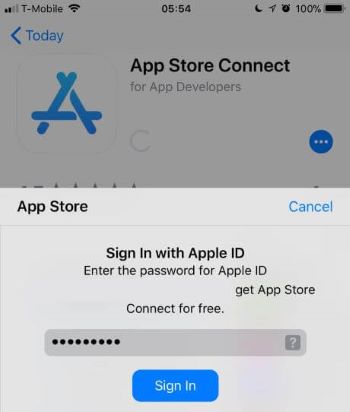
- Solution 1: Arrange the Settings of iTunes & App Store

- Solution 2: Try to Restart Your iPhone
- Solution 3: Check Updates of Apps
- Solution 4: Try to Disable Your iMessage and FaceTime
- Solution 5: Sign out the Apple ID
Solution 1: Arrange the Settings of iTunes & App Store
The App Store keeps asking for passwords maybe because you put the Password Settings of purchase and in-App purchases on the status of Always Require, which means that you are required to enter your password every time you purchase even if you've already signed in with your Apple ID. If you don't want the popup to appear so often, you can change the Settings to Require After 15 Minutes, which means that the App Store won't ask for passwords again if you have already entered your password within the last 15 minutes.
And for free downloads, the App Store keeps asking for passwords probably because you turned on the Require Password. If you don't want to enter passwords when you download free items, you can turn it off.
Simple Steps for You:
Step 1. Launch the Settings app.
Step 2. Click on [your name] and choose the "iTunes & App Store".
Step 3. Select "Password Settings". (Note: If you can't find the Password Settings, maybe you have turned on Touch ID or Face ID for purchase)
Step 4. Click the "Require After 15 Minutes" under the purchase and in-app purchases.
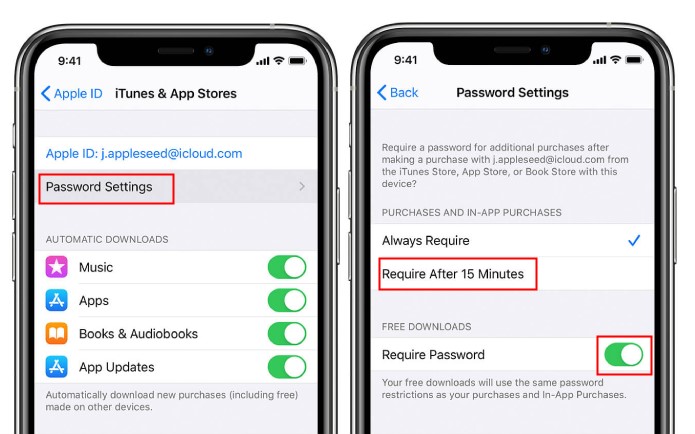
Step 5. Turn off the "Require Password" under the free downloads.
Step 6. Enter your password if asked and click "OK".
Solution 2: Try to Restart Your iPhone
To solve the problem of App Store keeps asking for passwords, you should restart your Apple device first before trying other methods. Many bugs or error messages on the iPhone or iPad can be fixed after rebooting. You just need to take the following steps.
Restart your iPhone X and later with Face ID:
- Press and hold the Side/Top button and either volume button until the power off slider comes out.
- Drag the slider to turn off your iPhone or iPad.
- Press and hold the Side/Top button until the Apple logo appears.
Restart your iPhone SE (2nd generation), 8, 7, or 6:
- Press and hold the Top/Side button until the power off slider comes out.
- Drag the slider to turn off your iPhone or iPod touch.
- Press and hold the Top/Side button until the Apple logo appears.
Restart your iPhone SE (1st generation), 5, or earlier:
- Press and hold the Top button until the power off slider comes out.
- Drag the slider and wait 30 seconds to turn off your iPhone.
- Press and hold the Top button until the Apple logo appears.

Solution 3: Check Updates of Apps
This error issue can be caused if you fail to download or update an app from the App Store. So you may need to check your purchased app from App Store to ensure if you need to install any updates. The App Store icon with a red circle means that the updates are ready to be installed. The number inside the red circle indicates how many updates for apps are available now. Then you may need to take the following steps to complete all app updates.
Step 1. Go to "App Store".
Step 2. Tap on "Updates".
Step 3. Tap on "UPDATE" on each app, or just simply tap on "Update All".
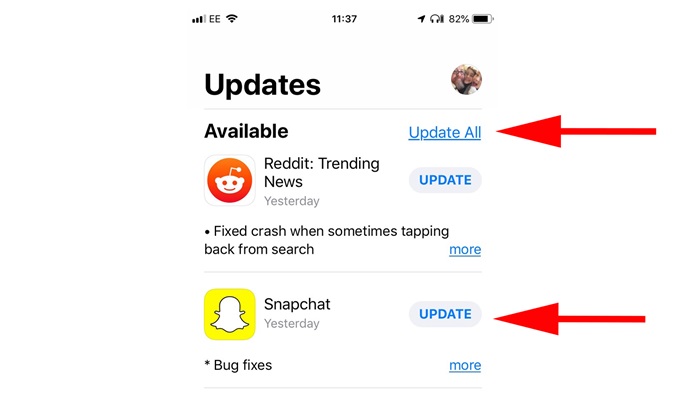
Solution 4: Try to Disable Your iMessage and FaceTime
iMessage and FaceTime are directly linked to your App Store ID. Both of them require your account information even when you don't use their services. So either of these two apps can be the cause of App Store verification error. You can try to disable then enable the iMessage and FaceTime to fix the error.
Disable and enable the FaceTime:
Step 1. Go to "Settings > FaceTime".
Step 2. Slide the switch to turn off FaceTime.
Step 3. Wait a few seconds, then switch to turn on the FaceTime (You may be asked for an Apple ID and its password).
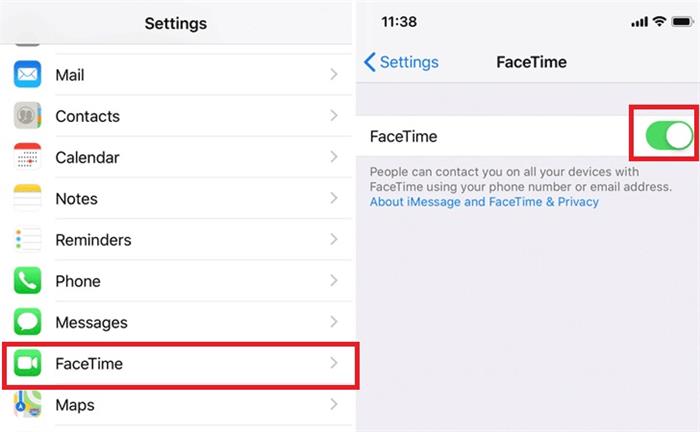
Disable and enable the iMessage:
Step 1. Go to "Settings > Messages".
Step 2. Slide the switch to turn off iMessage.
Step 3. Wait a few seconds, then switch to turn on the iMessage (You may be asked for an Apple ID and its password).
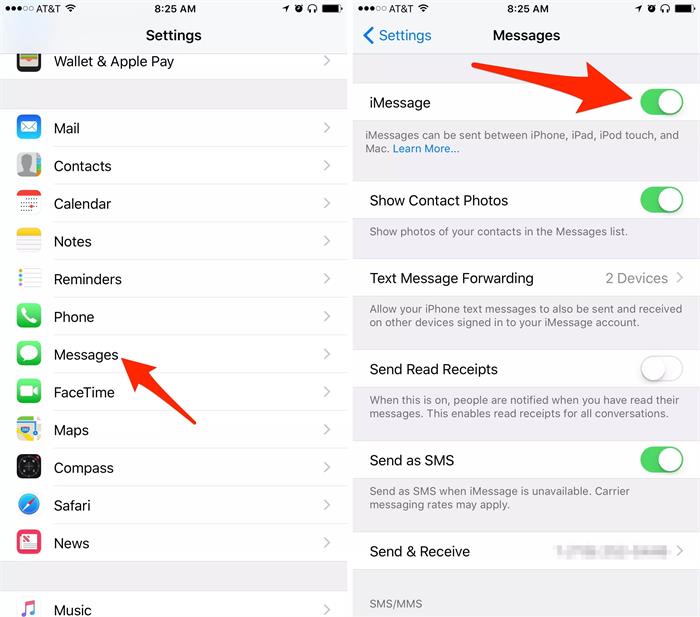
Solution 5: Sign out the Apple ID
If you fail to solve the issues of App Store keeps asking for passwords with above methods, you may need to reset your Apple ID. It can usually solve the errors related to your account. You need to log out then log back onto your device. You should remember your Apple ID password and take the following steps.
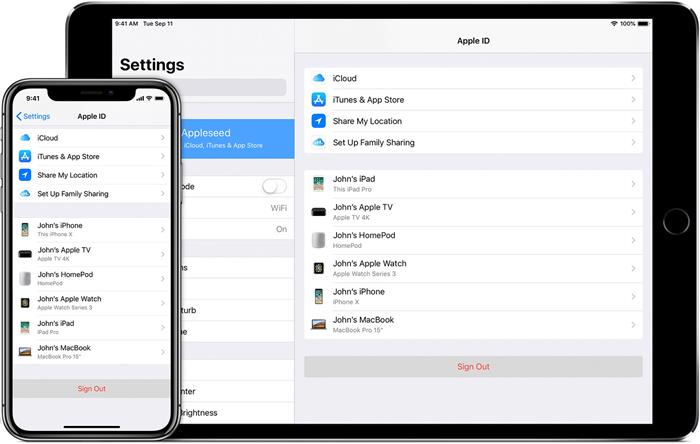
For iOS 10.3 or later:
- Go to "Settings > [Your Name]".
- Scroll down to the bottom and tap on "Sign Out".
- Enter your Apple ID password and tap on "Turn Off".
- On the same interface, tap on "Sign In", then enter the same Apple ID and its password.
For iOS 10.2 or earlier:
- Go to "Settings > iCloud".
- Scroll down to the bottom and tap on "Sign Out".
- Tap "Sign Out", and tap on "Delete from My iPhone".
- Choose to keep the data on your Apple device.
- Enter your Apple ID password and tap on "Turn Off".
- On the same interface, tap on "Sign In", then enter the same Apple ID and its password.
Conclusion
It's annoying that the App Store keeps asking for passwords. And the causes are complex. We have offered you several methods for you to solve this problem. After trying them respectively, you can get rid of the popup password issue easily.
How To Not Sign In Alwasy In App Store
Source: https://www.imyfone.com/unlock-iphone/app-store-keeps-asking-for-password/
Posted by: buffwruch1963.blogspot.com

0 Response to "How To Not Sign In Alwasy In App Store"
Post a Comment